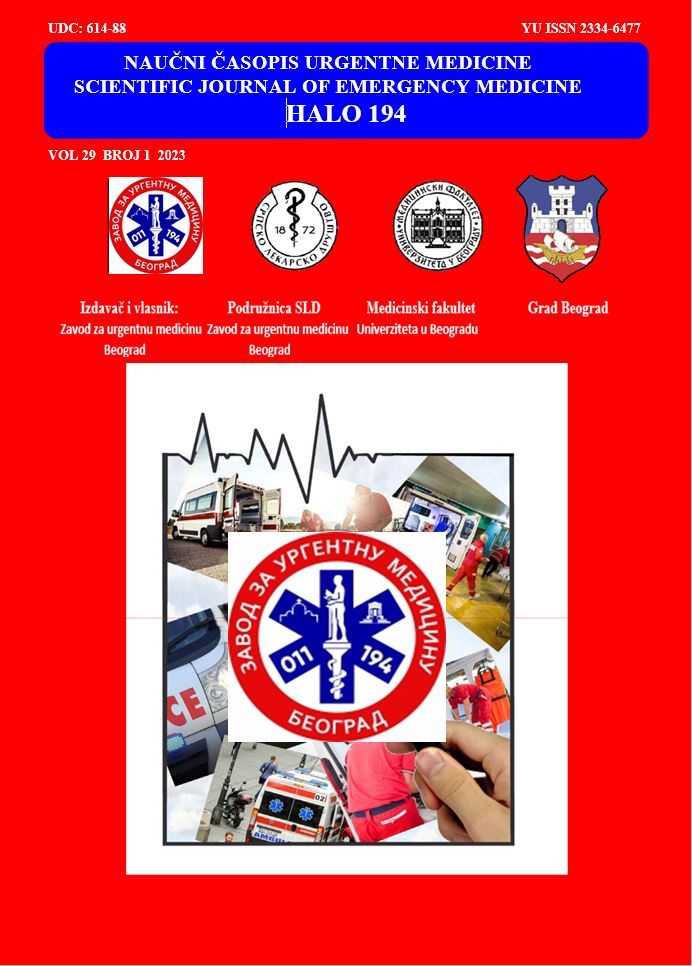Case report: recurrent epistaxis as a consequence of massive inverted papilloma of the sinonasal region
Abstract
Introduction The inverted papilloma is the most common benign tumor of sinonasal region, which has a locally destructive growth pattern, tendency to recur, and can become malignant. It grows from the epithelium of the sinonasal mucosa. One of the clinical signs is epistaxis, which represents an emergency case. The aim of this case report is to illustrate basic characteristics of inverted papillomas, which in some patients could be a cause of recurrent epistaxis.
Case report A female patient aged 75 came to our ear, nose, and throat emergency room because of repetitive left-sided nose bleeds. Clinically, histopathologically, and by radiological scans, we confirmed the diagnosis of inverted papilloma. Soon after, the patient was operated on.
Conclusion In patients with recurrent nose bleeds, an accurate diagnosis of inverted papilloma is needed for planning the future surgical treatment in order to avoid recurrence, local destruction and malignant alteration of inverted papilloma.
References
1. Syrjänen S, Syrjänen K. HPV-Associated Benign Squamous Cell Papillomas in the Upper Aero-Digestive Tract and Their Malignant Potential. Viruses. 2021 Aug 17;13(8):1624. [DOI: 10.3390/v13081624] [PMID: 34452488]
2. Eide JG, Welch KC, Adappa ND, Palmer JN, Tong CCL. Sinonasal Inverted Papilloma and Squamous Cell Carcinoma: Contemporary Management and Patient Outcomes. Cancers. 2022 Apr 28;14(9):2195. [DOI: 10.3390/cancers14092195] [PMID: 35565324]
3. Jewett FC, Coulter MJ, Nelson BL. Sine Qua Non: Sinonasal Inverted Papilloma. Head Neck Pathol. 2021 Sep;15(3):950–4. [DOI: 10.1007/s12105-021-01289-6] [PMID: 33544382]
4. Tsumura M, Makihara S, Nishikori A, Gion Y, Morito T, Miyamoto S, et al. Clinicopathologic Analysis of Sinonasal Inverted Papilloma, with Focus on Human Papillomavirus Infection Status. Diagnostics (Basel). 2022 Feb 10;12(2):454. [DOI: 10.3390/diagnostics12020454] [PMID: 35204545]
5. Sunkara PR, Saraswathula A, Ramanathan M. Etiology of sinonasal inverted papilloma: An update. Laryngoscope Investig Otolaryngol. 2022 Aug 24;7(5):1265–73. [DOI: 10.1002/lio2.821] [PMID: 36258846]
6. Lee JJ, Orlowski HLP, Schneider JS, Roland LT, Eldaya R, Jiramongkolchai P, et al. Computed Tomography as a Predictor of Sinonasal Inverted Papilloma Origin, Skull Base Involvement, and Stage. J Neurol Surg B Skull Base. 2021 Jul;82(Suppl 3):e335–41. [DOI:10.1055/s-0040-1701677] [PMID: 34306958]
7. Krouse JH. Development of a Staging System for Inverted Papilloma. The Laryngoscope. 2000;110(6):965–8. [DOI: 10.1097/00005537-200006000-00015] [PMID: 10852514]
8. Baser B, Mishra A, Chaubey P. Endoscopic Modified Danker’s Approach for Management of Sinonasal Inverted Papilloma: Our Experience. Indian J Otolaryngol Head Neck Surg. 2021 Sep;73(3):282–9. [DOI: 10.1007/s12070-020-02090-7] [PMID: 34471615]
- Autori zadržavaju autorska prava i pružaju časopisu pravo prvog objavljivanja rada i licenciraju ga "Creative Commons Attribution licencom" koja omogućava drugima da dele rad, uz uslov navođenja autorstva i izvornog objavljivanja u ovom časopisu.
- Autori mogu izraditi zasebne, ugovorne aranžmane za neekskluzivnu distribuciju članka objavljenog u časopisu (npr. postavljanje u institucionalni repozitorijum ili objavljivanje u knjizi), uz navođenje da je članak izvorno objavljen u ovom časopisu.
- Autorima je dozvoljeno i podstiču se da postave objavljeni članak onlajn (npr. u institucionalni repozitorijum ili na svoju internet stranicu) pre ili tokom postupka prijave rukopisa, s obzirom da takav postupak može voditi produktivnoj razmeni ideja i ranijoj i većoj citiranosti objavljenog članka (Vidi Efekti otvorenog pristupa).

